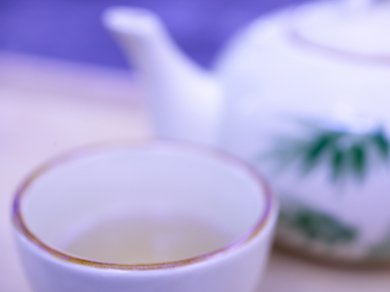Flavanols and theanine found in tea have a variety of potential health benefits. Green tea, in particular, is renowned for containing flavanols.
Benno Zimmermann and Maike Gleichenhagen, University of Bonn, Germany, have studied the effects of temperature and steeping time on the main flavanols contained in green tea. Concentrations of flavanols in tea without additives are highest after 7 min of steeping at a constant 100 °C. Additives such as lemon juice increase flavanol concentrations by up to 20 %, due to its pH lowering effect.
Emma Keenan and co-workers, University of Bristol, UK, have used HPLC to measure L-theanine concentrations. Steeping time was again found to be a major factor in theanine concentration, with small amounts of additives having little or no effect. Black tea was found to contain the most L-theanine (24.2 ± 5.7 mg) while a cup of green tea contained the least (7.9 ± 3.8 mg).
- The effect of ascorbic acid, citric acid and low pH on the extraction of green tea: How to get most out of it
B. F. Zimmermann, M. Gleichenhagen,
Food Chem. 2010, 124.
DOI: 10.1016/j.foodchem.2010.08.009 - How much theanine in a cup of tea? Effects of tea type and method of preparation
E. K Keenan, M. D A Finnie, P. S Jones, P. J Rogers, C. M Priestley
Food Chem. 2010, 124.
DOI: 10.1016/j.foodchem.2010.08.071


